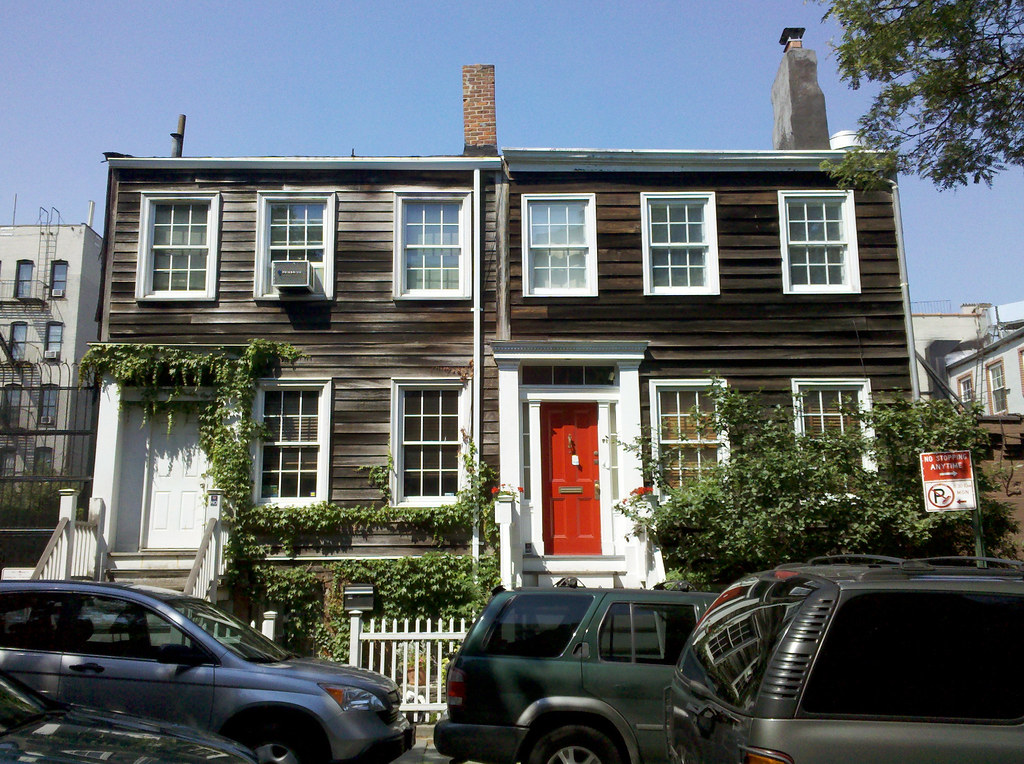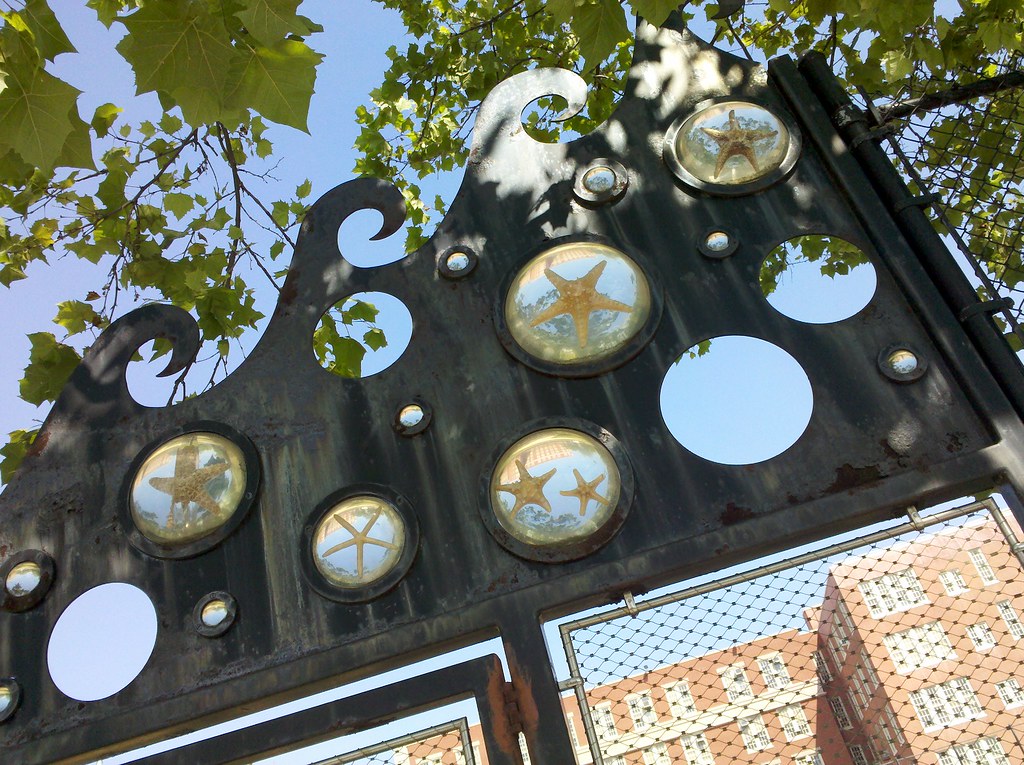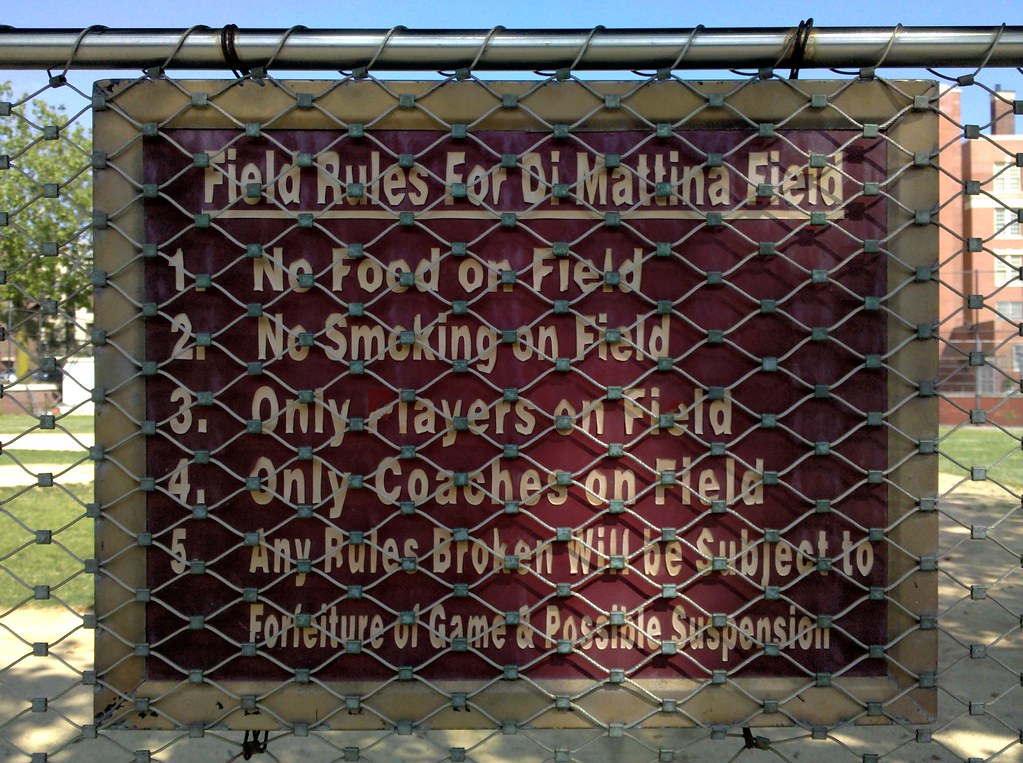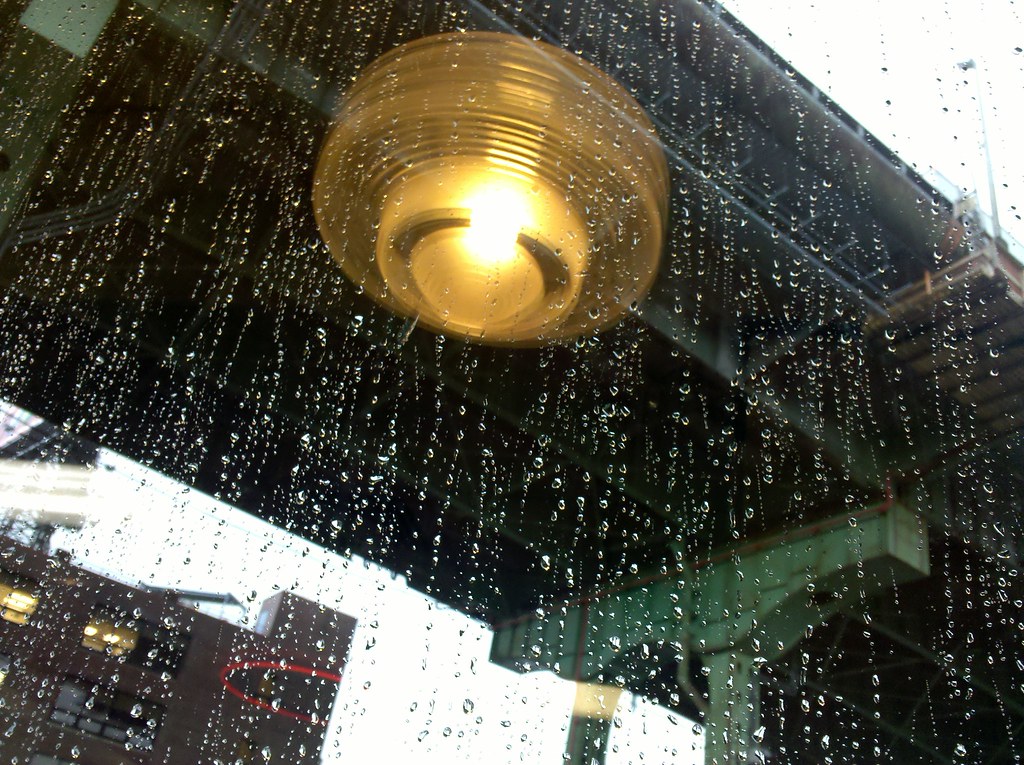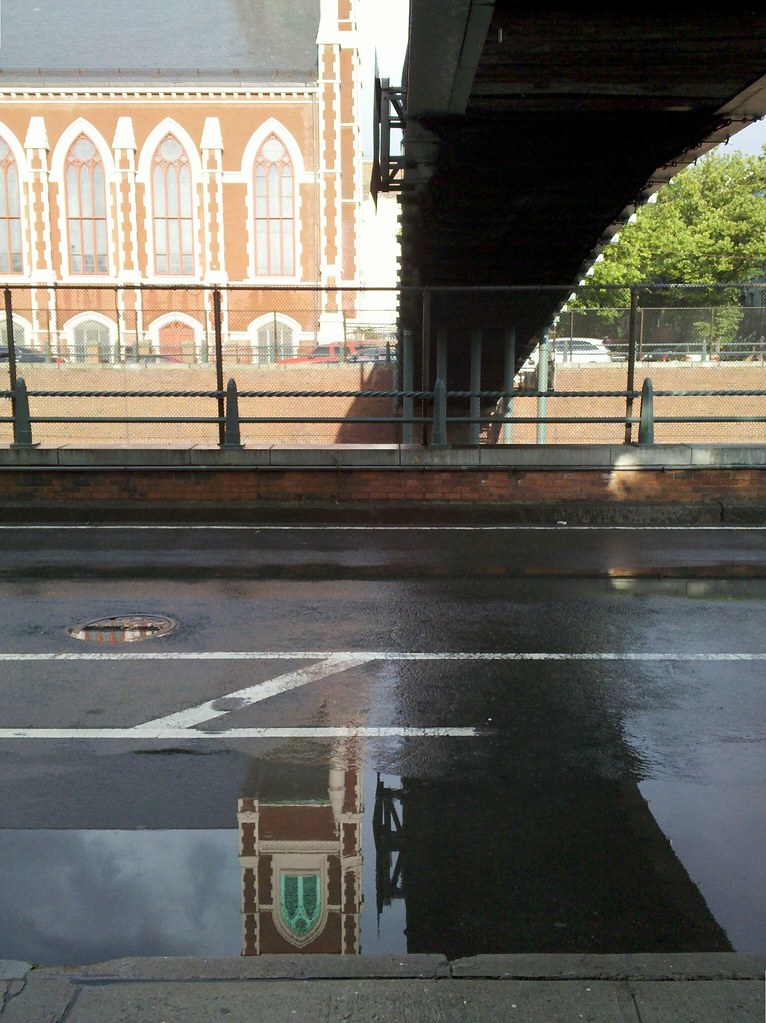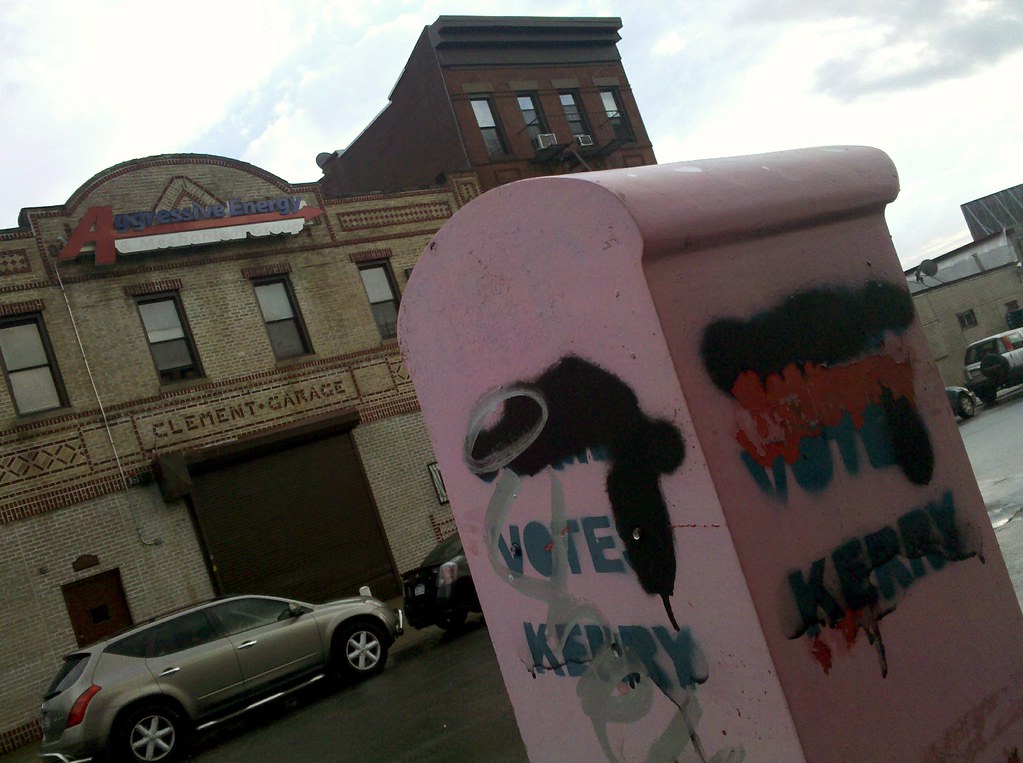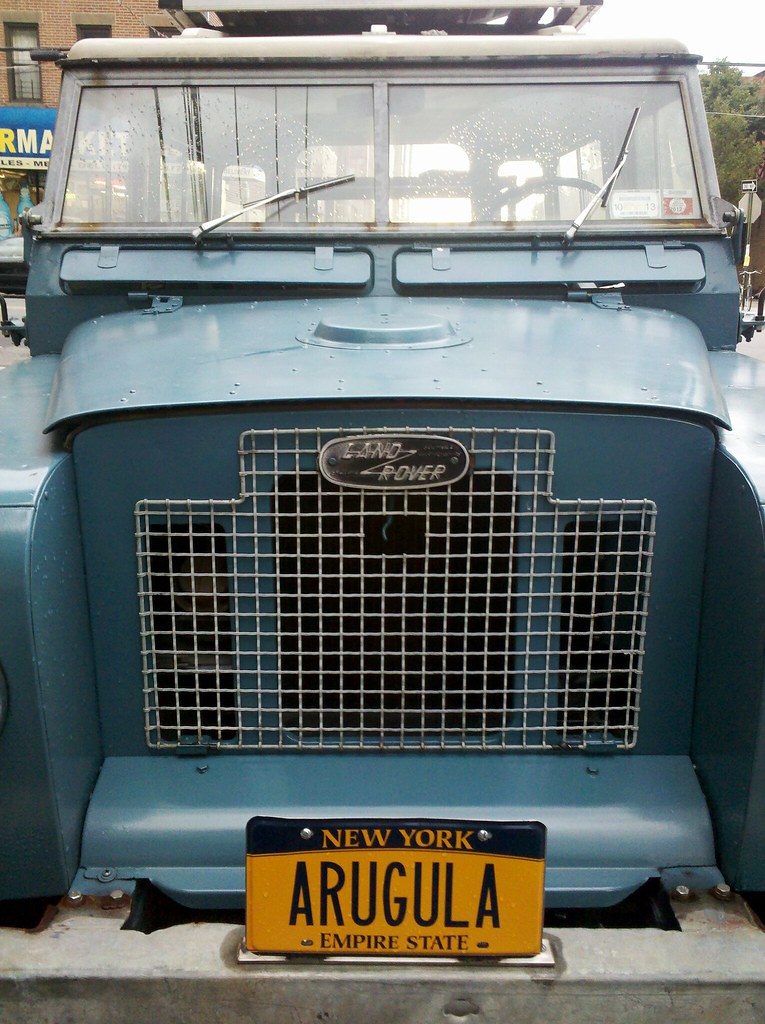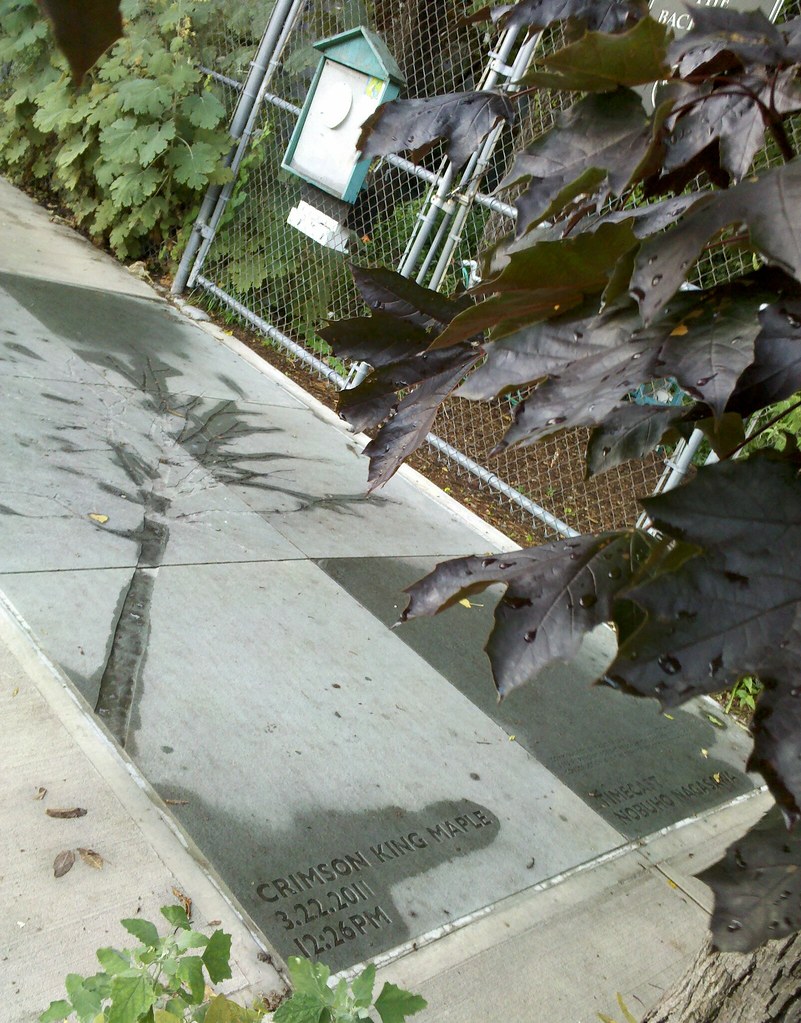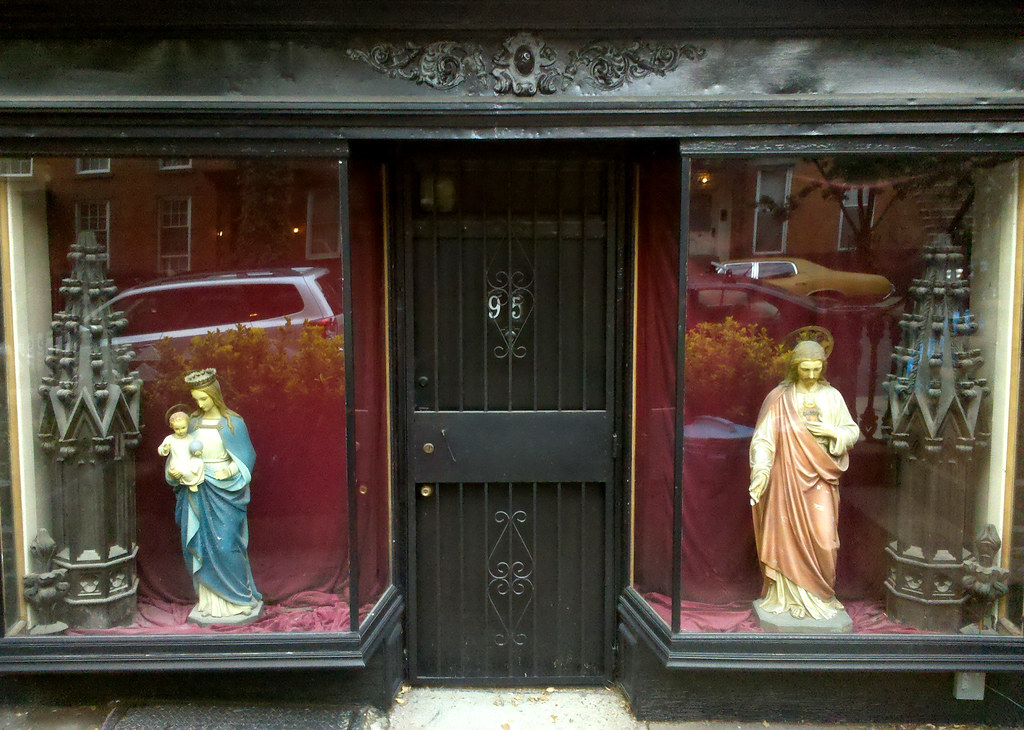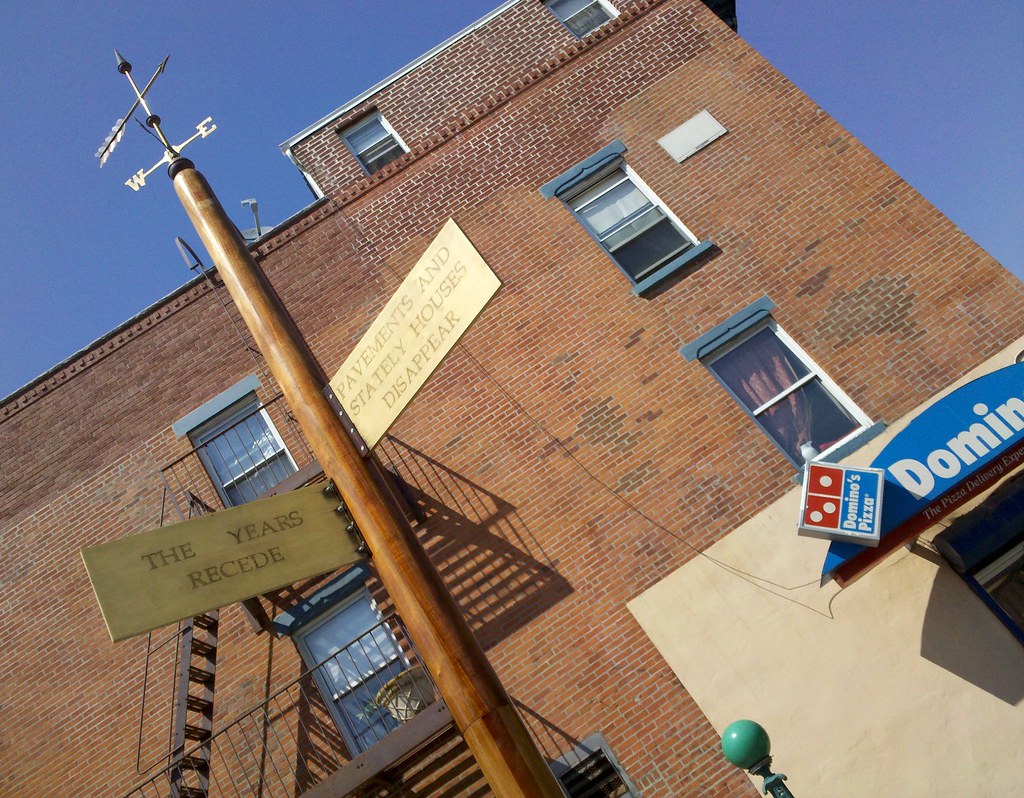
This mahogany pole, adorned with text from Walt Whitman's The Centenarian's Story, is one of a series of installations marking sites from the Battle of Brooklyn (a.k.a. Battle of Long Island), which was the first, and largest, major battle of the Revolutionary War, and could have been the last if the Americans had not managed a massive escape by boat across the East River to Manhattan.
From the vantage point of Cobble Hill Fort, which once stood near this spot, General George Washington monitored the action that day, and watched the sacrifices made by the gravely outnumbered Maryland 400 (remember them?), whose desperate, last-ditch counterattack provided cover for other soldiers to escape across Gowanus Creek, and bought time for the rest of the Americans to evacuate to Manhattan.
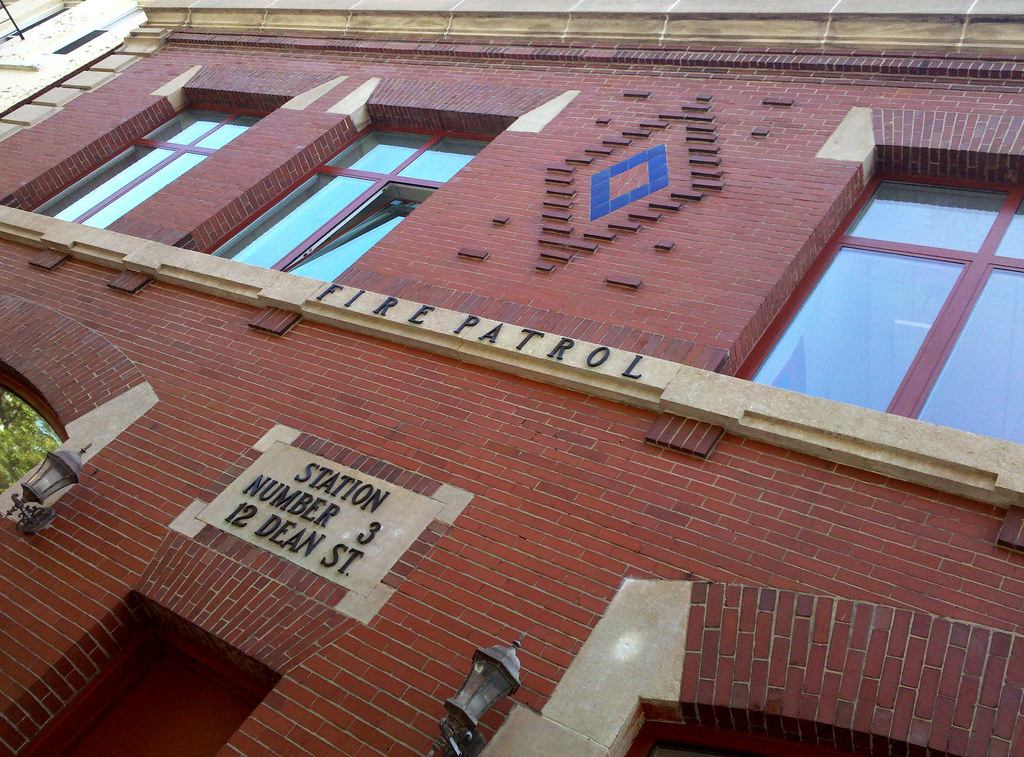
Now part of the Brooklyn Heights Montessori School, this building served as a fire insurance salvage corps station from the time it was completed in 1909 until 2006, when the New York Fire Patrol, which had taken over the station in 1910 and was the last surviving salvage corps in the nation, was finally disbanded and its three remaining stations shuttered.
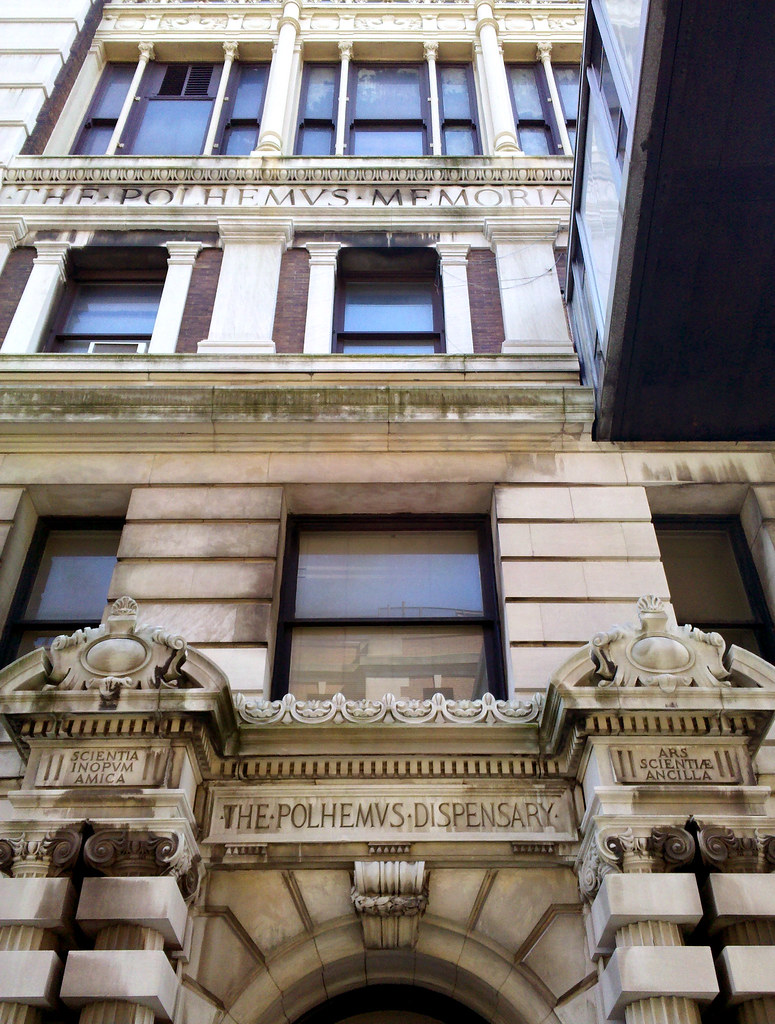
Until it was sold in 2008, this building (scroll to page 3) was owned by Long Island College Hospital (LICH), having been constructed in 1897 to provide free medical care for the area's poor, and classroom and laboratory space for the college. Possibly the first skyscraper hospital ever built, it was a top-of-the-line facility in its early days, housing one of the world's first X-ray machines.
LICH, now part of SUNY Downstate Medical Center, began its life in 1856 as the Brooklyn German General Dispensary, intended to serve the poor German immigrants who lived nearby (much like the German Dispensary we saw in the East Village). Rapidly broadening its scope, it had by 1858 become Long Island Hospital and Medical College, the first teaching hospital in the US. It was an influential institution in its day, introducing bedside teaching as a standard part of medical training, and becoming the country's first hospital to use stethoscopes and anesthesia. One of its early graduates was Alexander Skene, the gynecologist locked in a staring contest with JFK.
But perhaps most importantly, its innovative treatments led to a 1925 NY Times article that contains what must be one of the greatest opening lines in the history of journalism: "Thirty patients regarded as hopelessly insane are back at work and leading normal lives after being artificially inoculated with malaria".

This bear-like creature is part of a "traveling gallery of baldly transgressive public art."
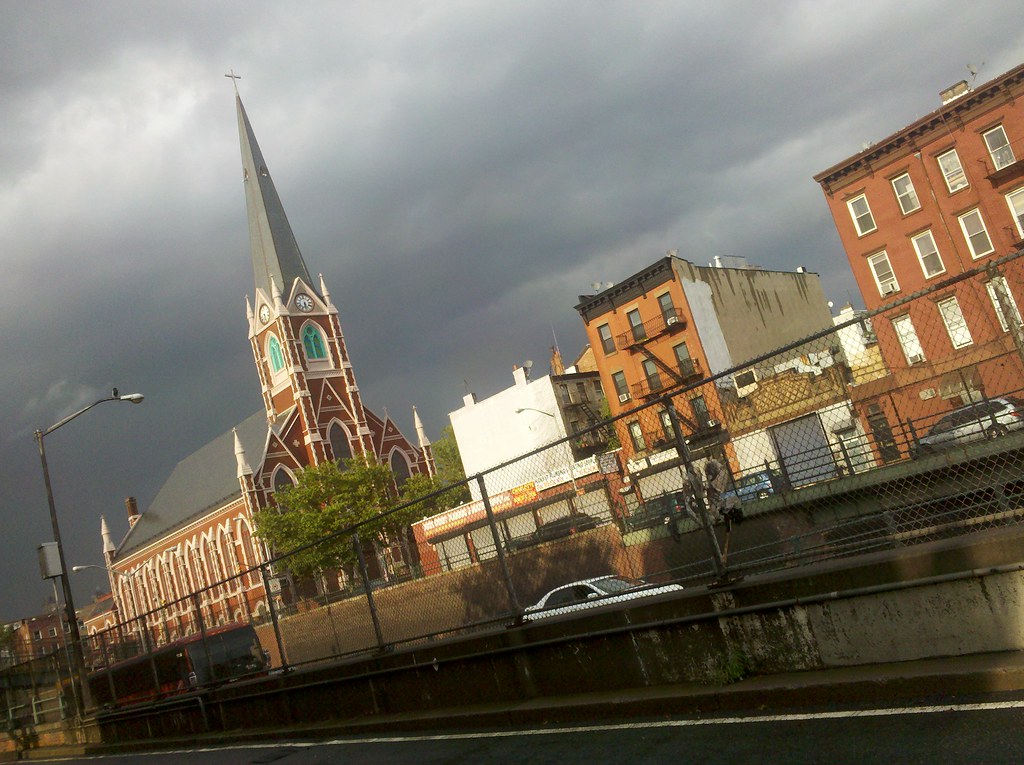
Completed in 1875, this neo-Gothic structure was built by the Parish of St. Stephen. The Church of the Sacred Hearts of Jesus and Mary, once located about half a mile north of here, was condemned in 1941 to make way for the BQE (which you can see in this photo being traveled by the white car and red bus), and the two parishes merged.
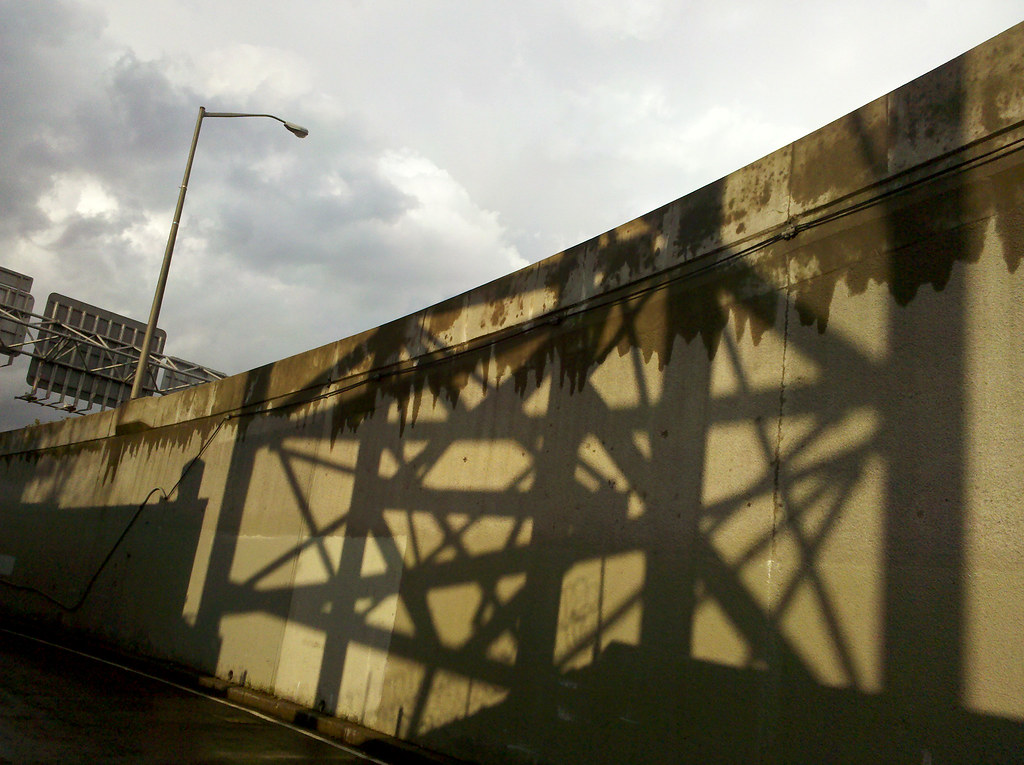
Since 1940, commercial billboards located closer than 200 feet to a highway have been illegal in NYC (unless they're advertising the business on whose property they stand), but this ban has regularly been flouted for decades without much in the way of consequences. Recently, however, the city has started enforcing the law, and the owner of this billboard has adapted. Back in 2009, you could find a seemingly risqué advertisement for a proctology clinic on this structure, but by 2011, all three sign faces were promoting non-commercial organizations — the New York Lottery, the Alzheimer's Foundation of America, and the YAI Network — bringing the billboard into compliance with regulations, though not doing anything to reduce visual distractions on the BQE. (Back in January, as you may recall, a different lottery billboard — this one illegal, because it also bore an ad for Dunkin' Donuts — toppled onto the BQE.)
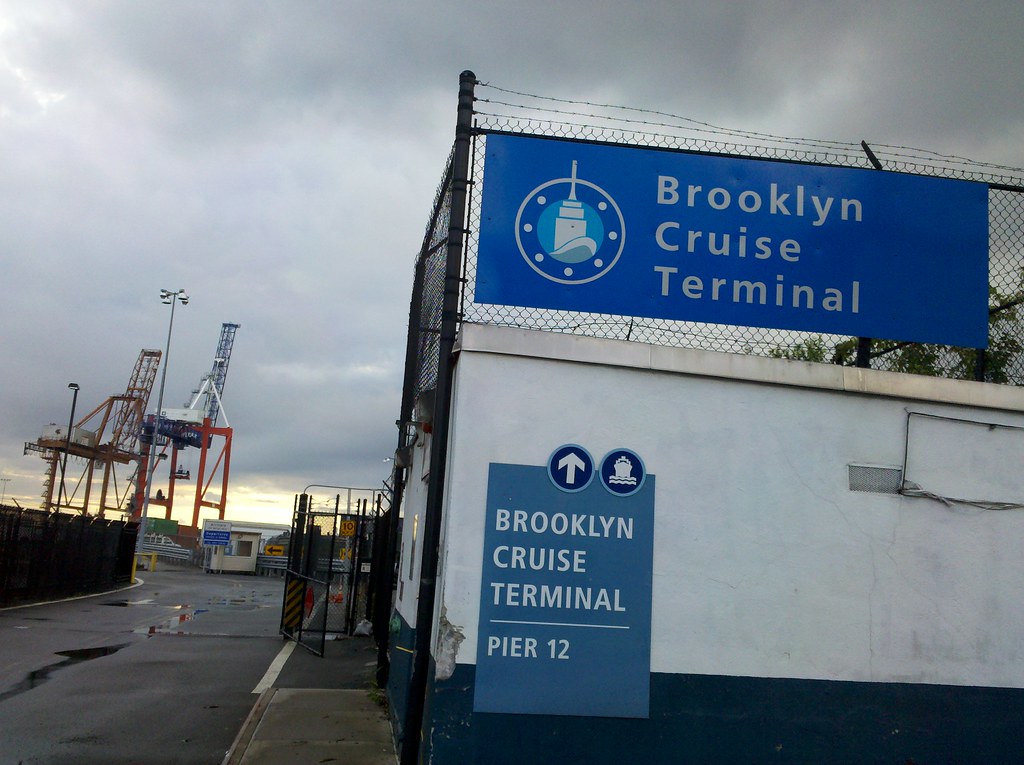
The newest of three such facilities in the NYC area, the Brooklyn Cruise Terminal in Red Hook opened to much fanfare in 2006 with the docking of the Queen Mary 2 (which had just lost its title as the world's largest cruise ship but was still the world's longest cruise ship, by 20 feet).
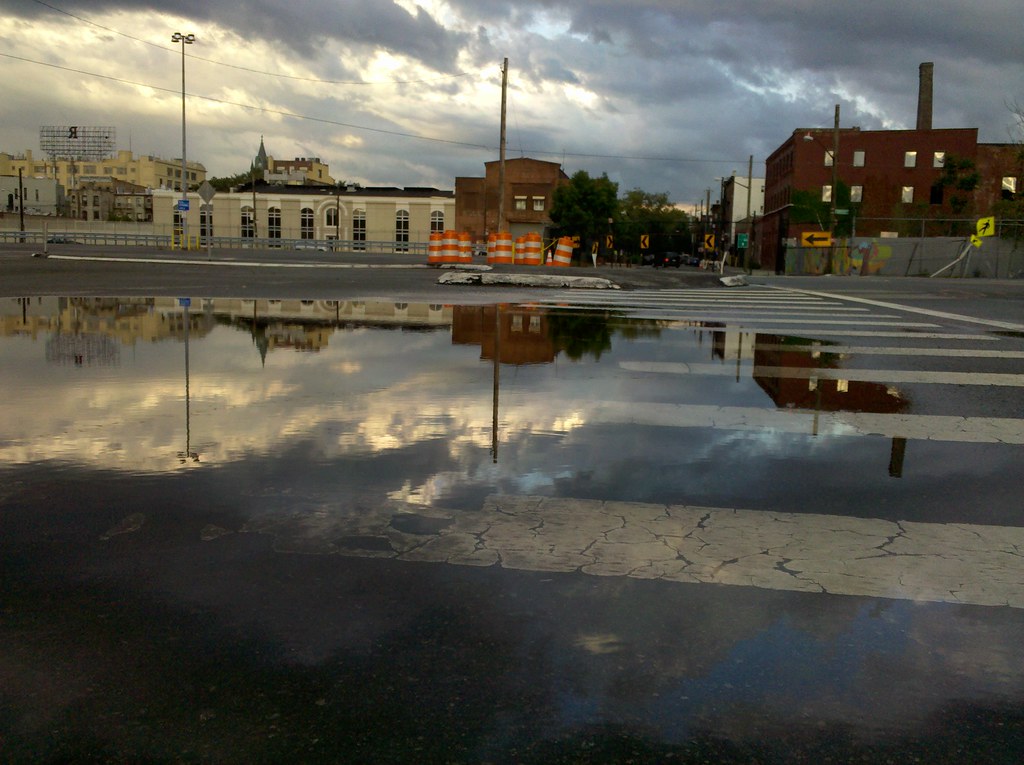
Here's the story behind that lone R on the billboard to the left.
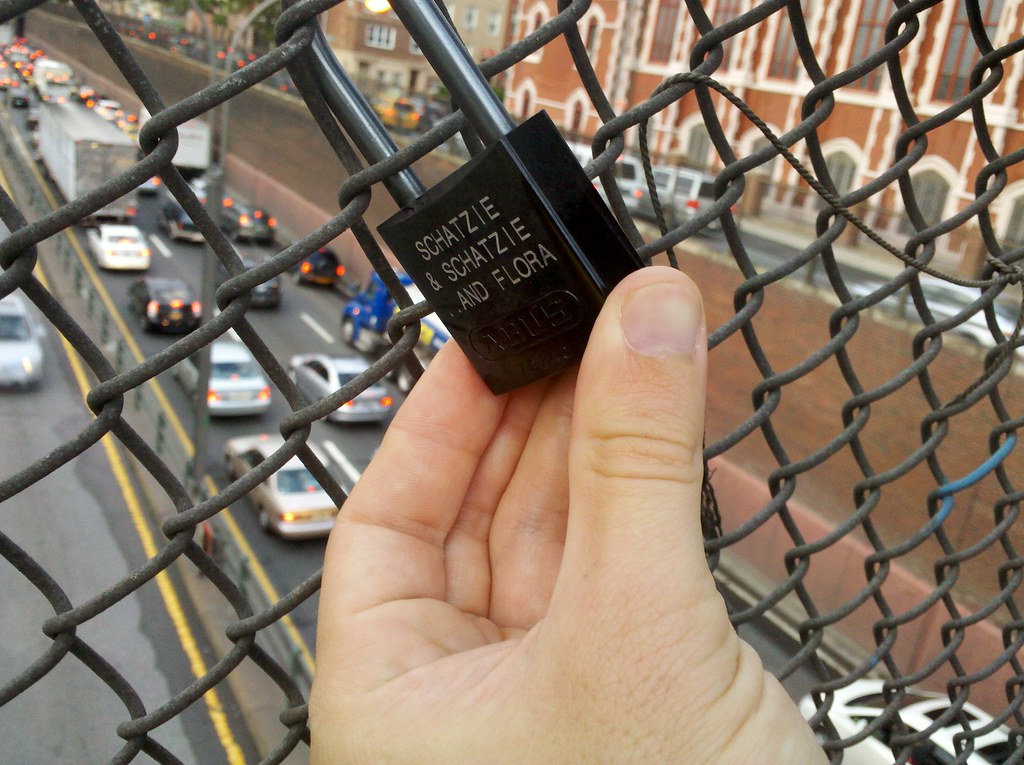
The Summit Street pedestrian bridge, like its much larger cousin, is ornamented with quite a few of these.
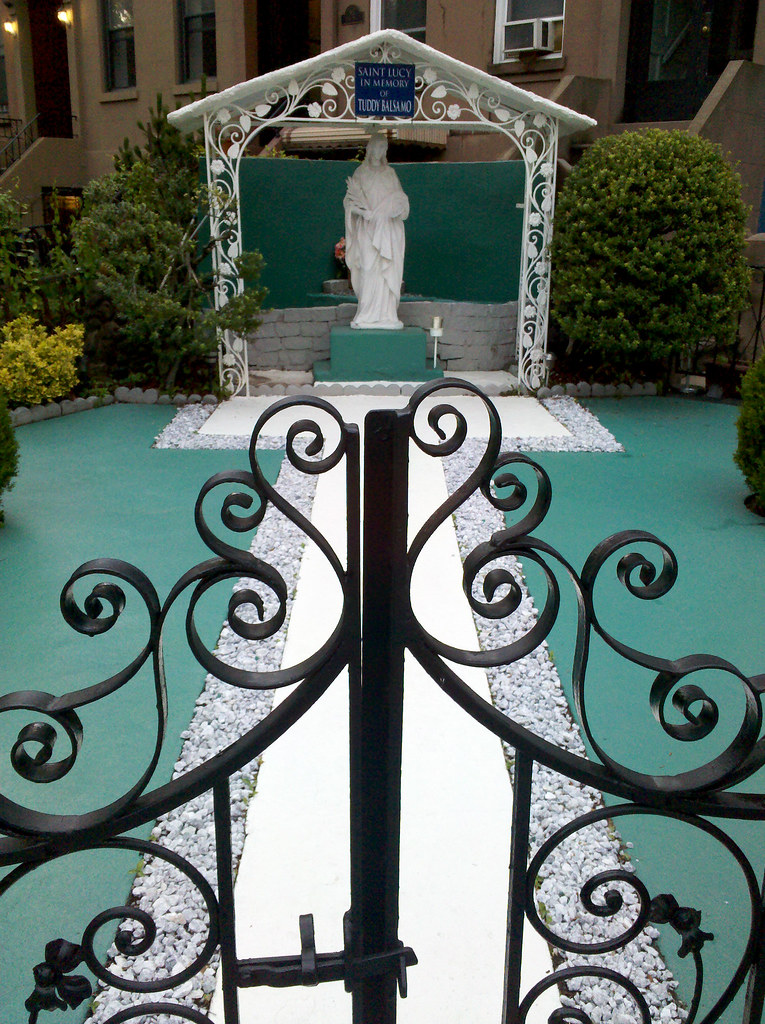
Erected after successful eye surgery in 1969, the patron saint of the blind has kept watch over the corner of 3rd Place and Court Street in Carroll Gardens ever since.
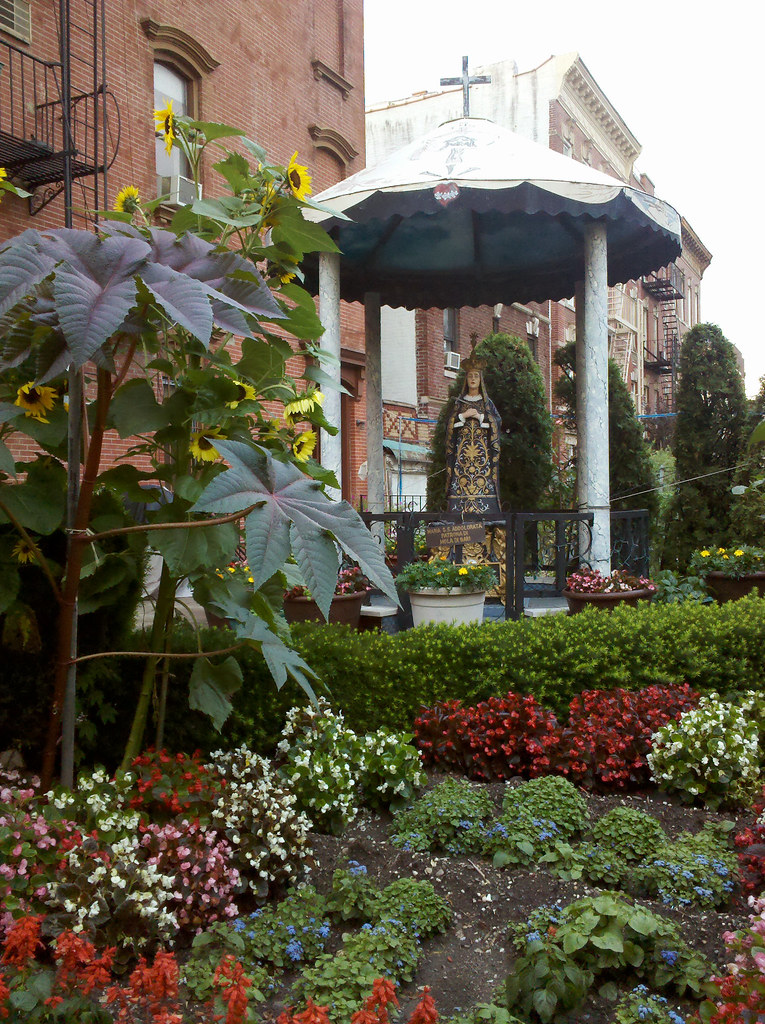
This replica of the statue that stands in the center of the Italian town of Mola di Bari, honoring its patron saint, is the focal point of the garden outside the Van Westerhout Cittadini Molesi Social Club, a gathering place for men from Mola. (Here's a substantial, though sloppily reported — Mola has 26,000 residents, not 2,500, for example — look inside the club.) Twice a year, a similar Madonna kept at Sacred Hearts-St. Stephen’s is paraded around the streets of Carroll Gardens for hours, accompanied by musicians and throngs of marchers.

